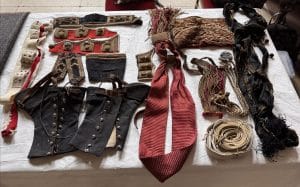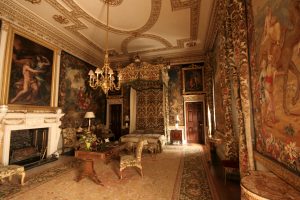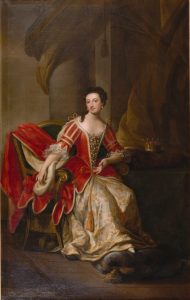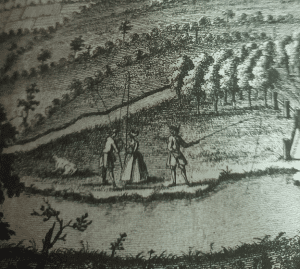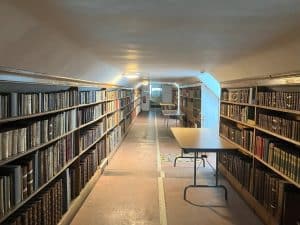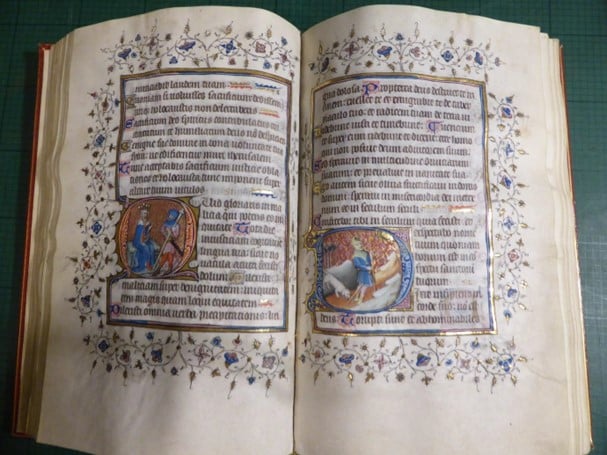
World Book Day: An insight into book conservation
March 2, 2023 | Treasure tales and archive snippets | 5 minute read
To celebrate World Book Day, Mac Graham (Librarian) and Laura Nuvoloni (Manuscript Curator) shed light on an aspect of the work that goes into looking after the library here at Holkham.
The Knightley Psalter, or book of Biblical Psalms, is one of the treasures of Holkham Library. It is also an important part of our history. Created in Bruges in the first quarter of the 15th century (between 1410 and 1420) for the English market, the volume once belonged to Sir Edward Coke (1552 to 1634), the Elizabethan jurist, and the founder of the family fortune. He had inherited it from his maternal uncle, George Knightley, hence the name by which the manuscript is commonly known.
Over the years, problems arose with the binding. For such an important volume, the decision was taken to have the binding repaired.
This is a specialist job and Holkham uses the services of Nick Selwood from Eagle Bindery and Conservation. We have worked with Nick for many years now and we can rely on him to repair our volumes to the highest standard.
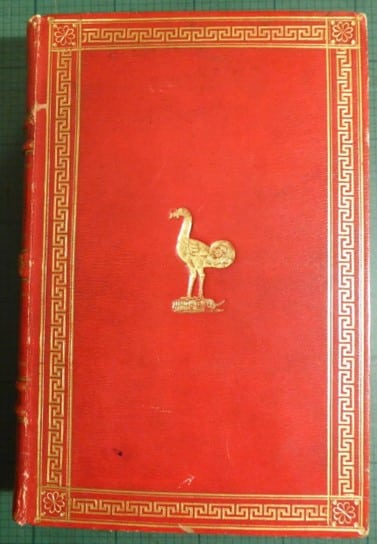
Not only does Nick repair the volumes for us, but he produces what we refer to as a condition report. This sets out the nature of the problem and exactly what has been done to solve it. This becomes part of the permanent record for the volume on our collections database. Future generations will be able to see exactly what has been done and when.
What follows is drawn from the condition report Nick wrote for us and it gives a fascinating insight into what is involved in repairing a book of this importance.

MS. 24 is a fabulous, illuminated manuscript on parchment, bound in red leather in the early 19th century. The binding is basically sound, with a few abrasions and scuffs. The problem lies with the end bands, which have broken, causing what is known as a ‘tenting’ of the spine when the volume is open. The break in the upper endband seems to correspond to the double-page with illuminations on both sides. This makes sense as it will have been a popular page to display and to show to visitors over the years.
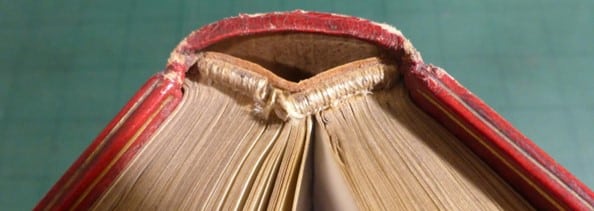

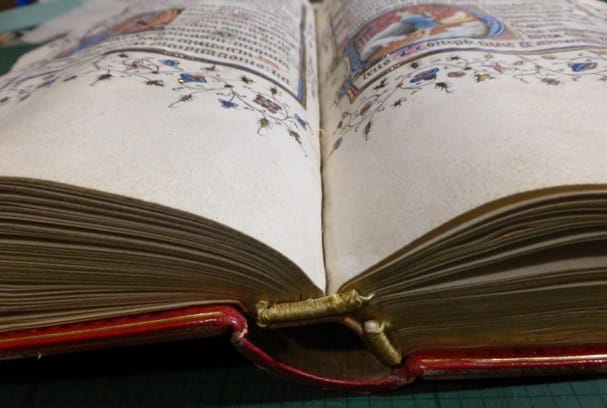
The volume falls open at this page and the lower endband has also broken but further along. There is a thick spine lining visible.
The solution looks pretty drastic at first sight. Nick removed the textblock from the binding and replaced the endbands and then put the binding back on.
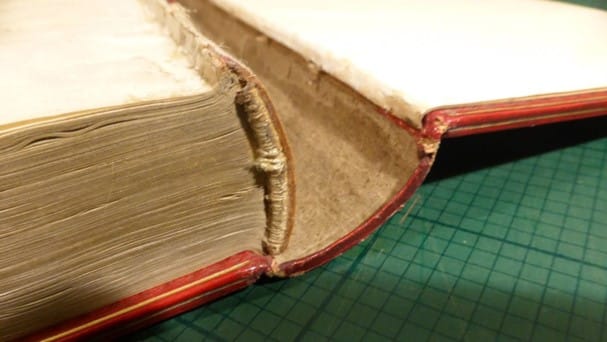
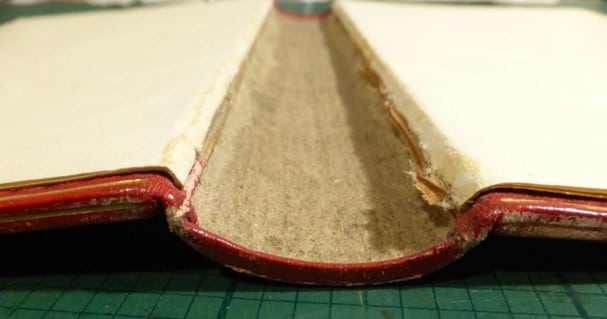
Once the binding was removed the thick spine lining, which turned out to be a piece of leather, was removed.
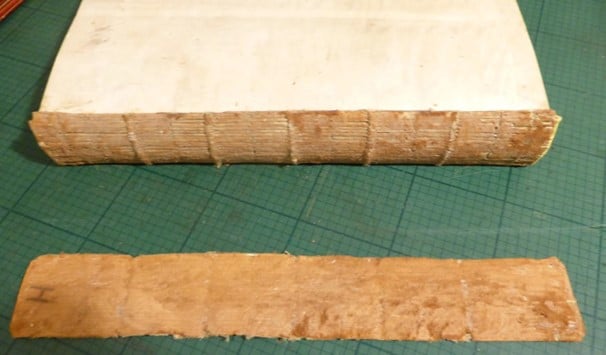
This allowed the sewing of the endbands to be seen, showing what are known as the tie-downs.
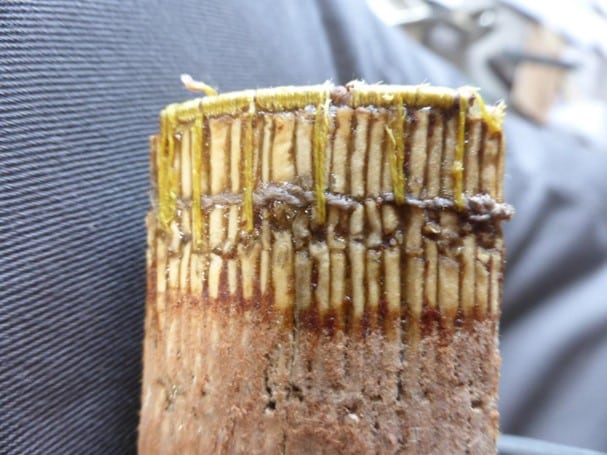
These are regularly spaced but, as can be seen, they do not go through every section which can lead to stresses along the endband.
The new endbands were sewn with tie-downs going through each section to give more strength and allow greater flexibility to the binding.
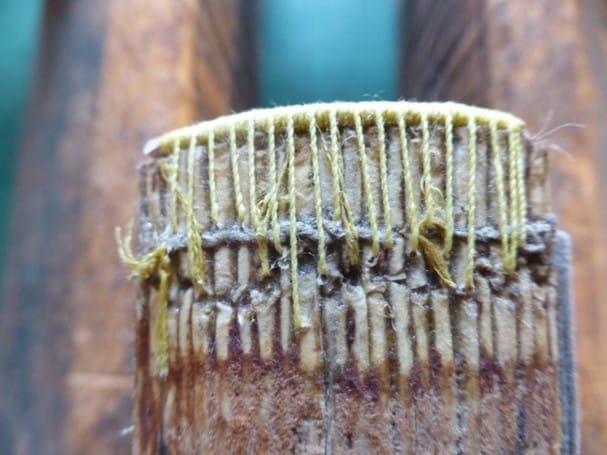
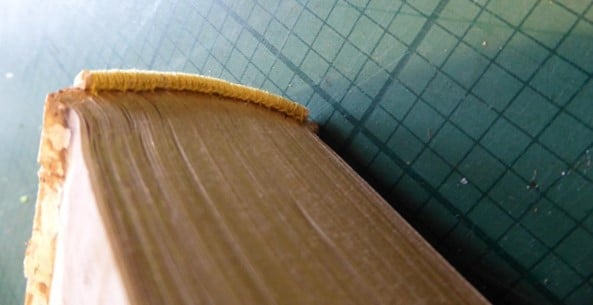
The textblock was then placed back into the binding and a hollow spine lining attached.
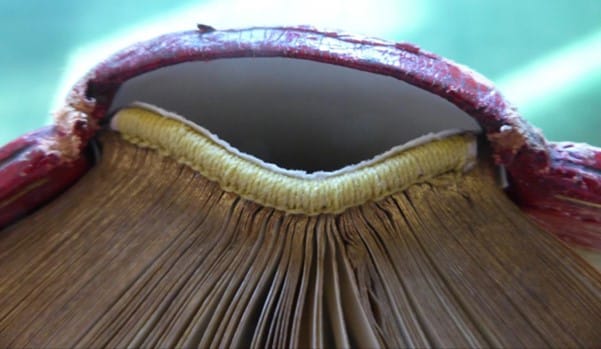
The volume can now be opened without the tenting which previously occurred.
Nick then attached new joints to secure the binding.
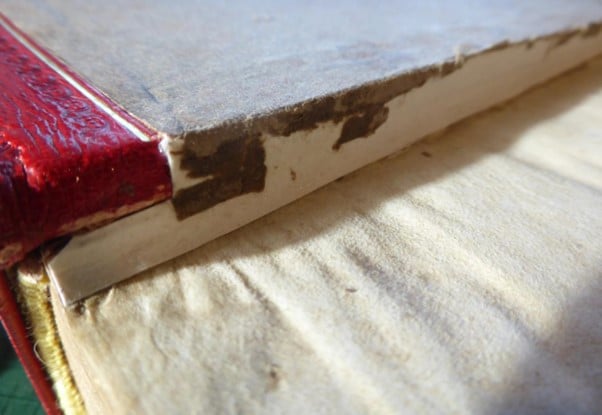
He then reattached the original endpapers.
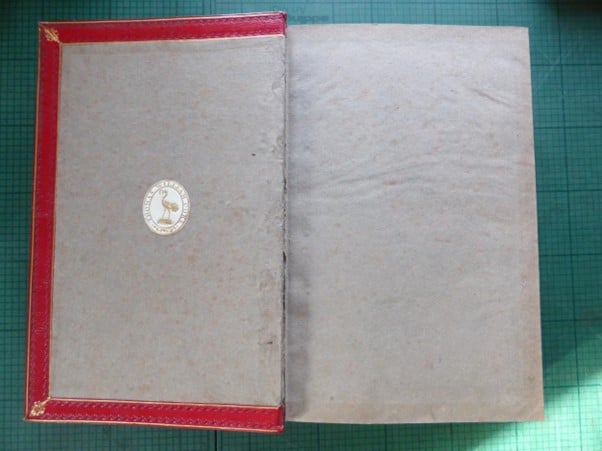
Finally, he toned the scuffed areas of the cover which made them almost disappear.
The volume is now looking as good as new, and we shall now be able to display the volume on special occasions and allow specialist academics to view the volume by appointment.
Over the years, we have been approached by various groups who wish to visit Holkham specifically to see aspects of our extensive library. If you are interested in bringing such a group to Holkham, please do get in touch and we will do our best to organise a private tour of the library for you.
Back to Journal Back to Journal